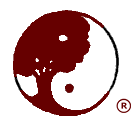Because the client remains clothed, Jin Shin Do® is particularly compatible with psychotherapy, as well as with physical therapy. Although JSD acupressure is used by many health care professionals, it is also especially suited to teaching people how to help themselves and each other. The unique 45-point system (originally 30 points), color-coded chart, and simple 'release recipes' make JSD acupressure easy to learn. After taking the magical Basic JSD Class, students can give pleasant general balancing sessions and help release common tensions.
At its basic level, rather than recommending specific points for specific conditions, JSD seeks to stimulate the body's own self-regulating system by activating the eight Strange Flows, a primary balancing system which continually adjusts the twelve "Organ Meridians." What developed into Jin Shin Do's use of the Strange Flows was inspired by Qigong masters and by Jiro Murai's "Jin Shin Jytsu." In 1976, Iona Teeguarden's research in Japan connected Jiro Murai's 'Major Vertical,' 'Main Central,' 'Minor Diagonal,' and 'Fatigue' Flows with the eight 'Strange Flows' (or 'Extraordinary Meridians') of acupuncture. This reunited Jiro Murai's legacy with its 5000 year old Chinese Taoist roots.
As students progress through the Module I classes, they learn additional powerful points in the 45 main point areas plus special point groups, while studying Organ Meridian and 'Five Elements' theory. In Module II classes, students refine point location and angle, integrate main theories (Strange Flows, Segments, Organ Meridians and Five Elements), and they learn to effectively combine points for particular conditions while using noninvasive bodymind processing techniques. (Ultimately, Jin Shin Do® Acupressurists use about 2/3 of the 361 traditional acu-points.)
Advanced students utilize the Five Elements-based Emotional Kaleidoscope - a detailed map of bodymind connections which correlates the traditional Oriental view of how meridians relate to specific emotions (over-joy, shock, anger, grief, fear, over-concern, reminiscence, etc.) with modern Western psychological teachings, including Dr. Wilhelm Reich's theories about the emotional relationships of the segments. Iona's "Emotional Kaleidoscope" diagram includes about a hundred feelings and emotions. It shows how, as the armoring releases, we naturally reconnect with our 'synergic' or harmonious feelings - like joy, sympathy, openness, resolution and motivation.
 Contact Us
Contact Us
 Top of Page
Top of Page
Copyright © 1999 - 2013 Jin Shin Do® Foundation.
All rights reserved.



